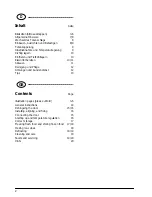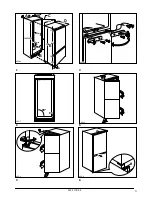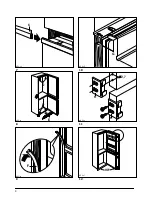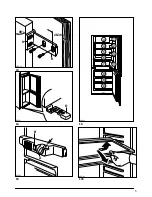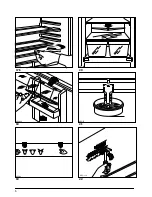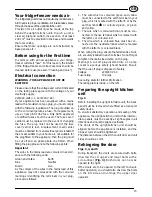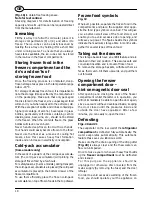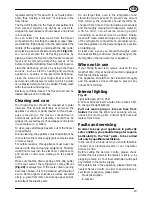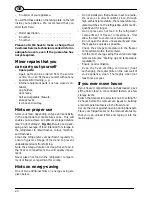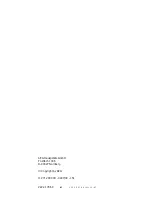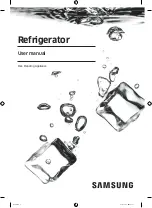
17
GB
Important!
At a room temperature above 16
°
C, the switch (B)
should be switched off again (red light goes out),
since this causes higher power consumption.
Important note!
High room/ambient temperatures, coldest tempera-
ture selector setting, and high refrigerator compart-
ment loading may cause continuous operation of
the refrigerating unit and frosting of the refrigerator
compartment rear wall.
Set the temperature selector to the warmest setting
(setting 4 or 5) to start the automatic defrosting
sequence in the refrigerator compartment.
Correct storage
Fig. 16
1
= Butter, cheese
2
= Eggs
3
= Drinks, preserves
4
= Preserves
5
= Pastries, convenience foods, dairy produce
6
= Meat, salami, and fish
7
= Fruit and vegetables
8
= Storage compartments for frozen food and
ice-cubes
9
= Compartment for freezing fresh food and
storage compartment for frozen food
For safety reasons (such as the risk of an explosion!)
containers containing inflammable gases, e.g.
aerosol cans or cigarette lighter refills, must never be
placed in the freezer or the refrigerator compartment.
Adjusting the storage racks
Fig. 17a
Storage shelves made either of glass or of plastic,
are included, depending on which version of which
model you have bought. You must push one of
these shelves into the lowest set of guides, just
above the containers for fruit and vegetables, and it
must stay in this position. If you wish to change the
distance between the other storage shelves, please
raise the shelf at the back and pull it slightly
forwards until it can be swivelled upwards or down-
wards and taken out. To insert it in a different posi-
tion, please follow the same procedure in reverse.
VARIO glass shelf
Fig. 17b
If, for instance, you wish to store bottles, cans, or
jars in the upright position, please move the front
half of the VARIO glass shelf (if fitted) to a different
level. You will thus gain the necessary space to
store tall items on the shelf below.
Adjusting the door rack
Fig. 18
Depending on the food stored, some door racks
can be changed to other holders or removed. Take
out the refrigerated food, press the door racks
upwards, reposition them, and press them back
into place.
Freezing fresh food
and storing frozen food
You can use the freezer compartment of your
fridge-freezer combination for freezing of fresh food
yourself.
Before filling the fridge-freezer for the first time with
frozen food (deep-frozen food), an inside tempera-
ture of -18
°
C must have been attained. Were
commend you to place a commercially available
thermometer with a measurement range of +40
°
C/-
40
°
C in the central storage compartment or on the
frozen food. If you want to freeze fresh food your-
self, please observe the following instructions to be
sure of obtaining the best results.
Freeze only sound fresh food. Do not freeze too
large a quantity at any one time. The quality of the
food is best preserved when it is frozen right
through to the core as quickly as possible. The
freezing capacity in 24 hours indicated on the rating
plate should not be exceeded.
If you want to freeze fresh food on several consecu-
tive days, this should be limited to 2/3 to 3/4 of the
indicated quantity. If you want to utilize the
maximum freezing capacity, set the knob
(Fig. 15)
to setting "6". For smaller quantities of up to 2 kg,
the knob need not be changed.
Place the packaged food
to be frozen in the
upper storage compartment (9)
(Fig. 16)
.
Take special care not to mix already frozen
foods with those not yet frozen.
After around 24 hours (earlier for smaller quantities),
set back the knob of the temperature selector to
the normal setting (between 2 and 4). After freezing,
you can place the frozen food at the appropriate
freezing level.
If further food is to be frozen, you must restack the
frozen food in the storage compartments (8)


